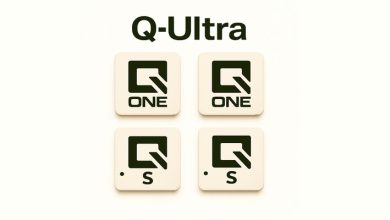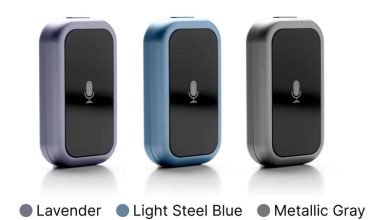Employee recognition is not a new concept, but the traditional focus of achieving it through fancy titles or one-size-fits-all perks simply won’t stand up to the expectations of the modern workforce.
In short, we’re in an era where making employees feel valued has to be handled in ways that resonate with them personally. Employees now expect thoughtful gestures that reflect their individual contributions and identities.
If you’re a manager or business owner and you want to overhaul your own employee recognition strategy so that it aligns with what’s needed in 2025, hold tight as we talk over what this involves.

Image Source: Pexels
Personalizing Recognition to Match Employee Preferences
A personalized approach is more effective than generic rewards. People value recognition tailored to their unique needs, preferences, and accomplishments. It shows thoughtfulness.
To make personalization work for you:
- Ask employees what motivates them through anonymous surveys or casual conversations
- Offer choices for rewards like gift cards, extra time off, or professional development opportunities
- Recognize individual strengths instead of applying blanket appreciation across teams
Tailoring gestures proves you understand and value your team members as individuals. Additionally, flexibility matters. Employees working remotely may prefer virtual recognition during meetings while on-site staff might appreciate tangible tokens of appreciation at the workplace.
Ultimately, personalized efforts foster deeper connections between leaders and their teams by acknowledging contributions in ways that resonate most with each person.
Incorporating Symbolic Gestures with Meaningful Impact
Symbolic gestures hold lasting value by creating emotional connections. Unlike monetary rewards, they remind employees of their achievements over time.
To make symbolic recognition effective:
- Present keepsakes such as plaques, handwritten notes, or custom awards during team meetings
- Use physical tokens like personalized gifts to signify specific milestones or contributions
- Opt for unique items, such as ordering bespoke challenge coins from customchallengecoins.net to commemorate significant accomplishments
Symbolism also reinforces shared culture. Teams feel proud when symbols align with organizational values or reflect group identity.
Adding meaning strengthens the impact of recognition. It transforms small gestures into significant reminders of appreciation that resonate long after they’re given.
Beyond plaques and notes, curated gifts can memorialize big wins. When recognizing senior leaders or top-performing teams, consider executive corporate gifts that feel personal yet professional – think premium desk accessories, engraved journals, or curated gift sets suited to promotions, work anniversaries, or milestone launches. Choosing unique, occasion-ready pieces reinforces your culture while giving recipients a lasting, practical reminder of their impact.
Leveraging Technology for Seamless Hybrid Recognition Programs
Technology simplifies many aspects of hybrid work, from addressing security gaps to streamlining communication. In an employee recommendation context, it brings remote and in-office teams closer to one another. This is achieved by keeping everyone connected and ensuring no one feels left out.
To use technology for this purpose, you can try:
- Implementing platforms that allow employees to give peer shoutouts through digital channels
- Hosting virtual ceremonies or recognition events with creative elements like team videos or live polls
- Using apps that track achievements, enabling leaders to deliver timely praise during team meetings
Consistency matters most here. Regular use of tech-driven programs reinforces trust, ensuring employees feel valued wherever they work from. Simple yet intentional efforts bring hybrid teams closer together while boosting morale effectively in both physical and virtual environments.
Building Inclusive Initiatives That Celebrate Diverse Contributions
Inclusivity is important in the workplace because it makes businesses 39% more likely to outpace their closest competitors. Here, it’s about ensuring that employee recognition efforts resonate with every team member, regardless of their role or background. It’s about making everyone feel seen and valued.
To build inclusive initiatives:
- Recognize contributions from all levels, not just leadership or high-performing roles
- Highlight achievements that go beyond standard metrics, such as teamwork and creativity
- Celebrate cultural diversity by incorporating special acknowledgments during relevant events or holidays
Promoting equity in how accomplishments are acknowledged lets you reinforce fairness across your organization. Inclusivity avoids leaving anyone behind and sets a tone where all efforts are valued equally.
Measuring the Impact of Recognition on Morale and Productivity
Effective recognition programs are backed by measurable outcomes. Tracking their impact ensures efforts align with employee needs while driving real results.
To measure effectiveness:
- Ask employees for feedback on how recognition affects their engagement
- Analyze productivity metrics before and after implementing new recognition initiatives
- Monitor retention rates to assess if appreciation strategies contribute to long-term job satisfaction
Beyond numbers, look at qualitative feedback too. Listen to what employees share about how recognition influences team dynamics and personal motivation. Since 28% of employees feel that the most valuable recognition they receive comes directly from their manager, this is also an opportunity to push hierarchical relationships in the right direction.
Focusing on both data-driven insights and direct input means you can build a program that continuously evolves. This reinforces its value as an essential part of maintaining goodwill across the workforce.
The Bottom Line
A memorable recognition strategy values individuality, encourages inclusivity, and adapts to evolving work environments. Thoughtful efforts leave lasting impressions on employees, boosting morale and engagement.
Prioritizing personalized gestures and leveraging tools effectively lets organizations create a culture where every contribution feels meaningful, driving both satisfaction and productivity across the board.




